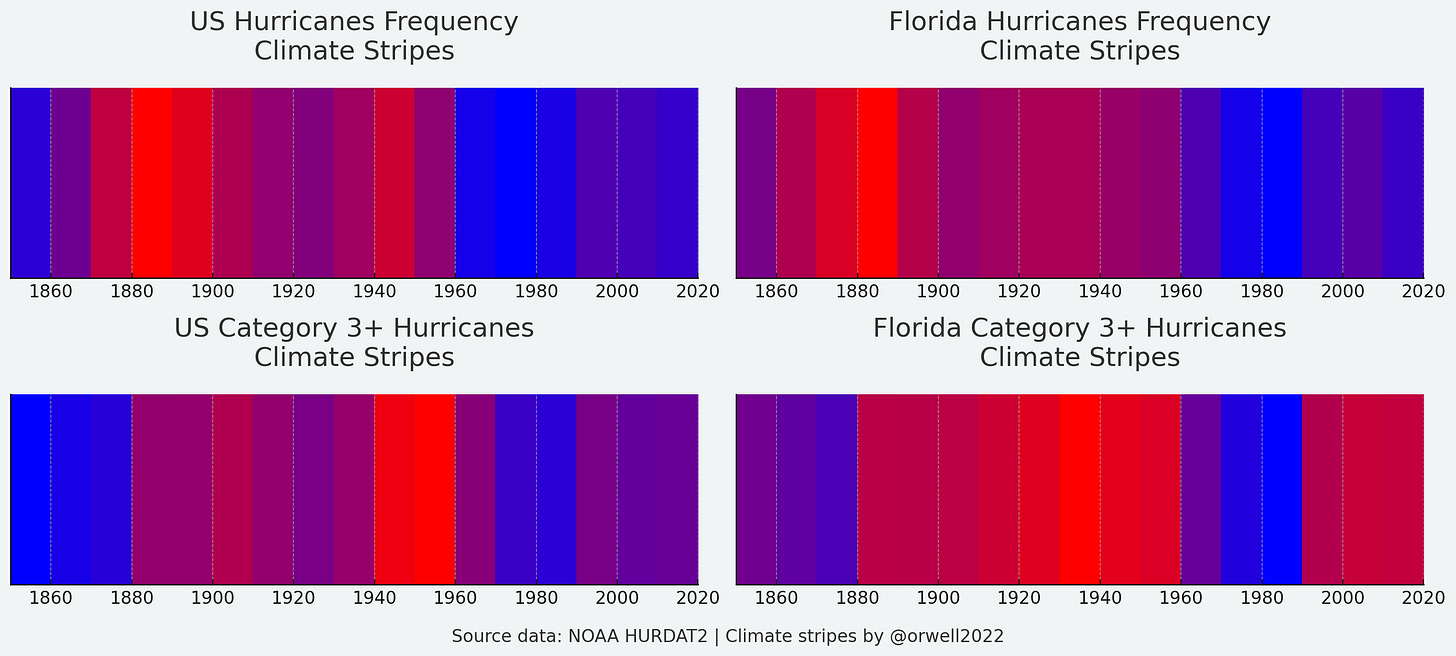Analyzing U.S. (and FL) Hurricane Trends with Updated 2024 Data
Analyzing Over 170 Years of U.S. Hurricane Data: No Clear Increase in Intense Storms Despite Periodic Fluctuations
In this short article, using same dataset as
, we explore U.S. and Florida hurricane trends, focusing on both the total number of hurricanes and the more intense Category 3+ hurricanes. The dataset, primarily sourced from NOAA's HURDAT2 database, gives a detailed record of hurricanes dating back to the 1850s. We made use of this extensive data, incorporated landfall events from the 2024 hurricane season, and visualized trends in frequency and intensity across time.In the decadal analysis, the range was set to define the last decade having 2024 season included.


While the frequency of these intense storms fluctuates over time, there appears to be a slight decrease in major hurricanes in the most recent decades. Category 3+ hurricane frequency appears flat.
Despite these variations, there is no clear upward trend in the data, and the number of intense hurricanes has not consistently increased over time.
Conclusion: No Evidence of Long-Term Climate Trends in Hurricanes
From the data, there is no evidence that the frequency or intensity of U.S. or Florida hurricanes has significantly changed due to climate-related factors. The overall trends remain relatively flat, with cyclical decadal variability playing the biggest role in explaining hurricane frequency. While the possibility of increased storm intensity in the future remains, the current dataset does not point to a clear trend linked to climate change.
Data Source: NOAA HURDAT Atlantic Hurricane Database | Updated manually with the five 2024 landfalls (as currently estimated).
Year Month State Cat Pressure M_Wind Name
2024 Jun TX 1 985 75 Alberto
2024 Jul TX 1 950 150 Beryl
2024 Aug NC 2 970 95 Chris
2024 Sept FL 3 940 120 Helene
2024 Oct FL 2 950 115 Milton


